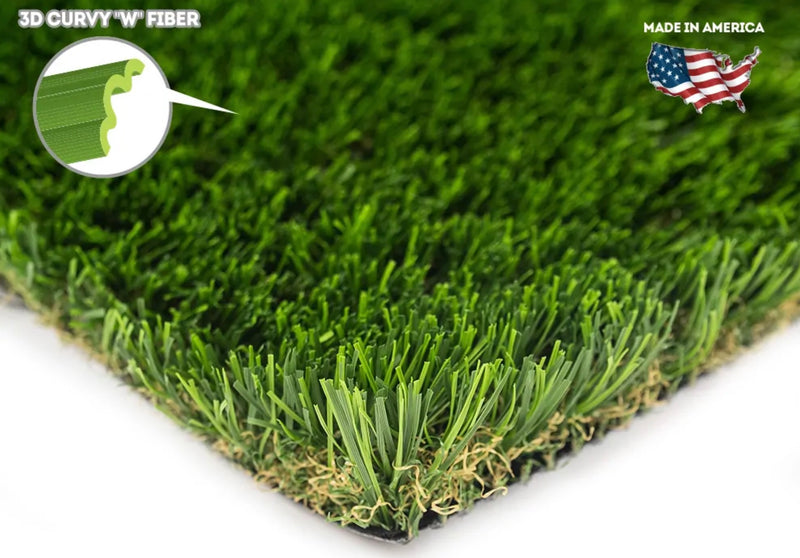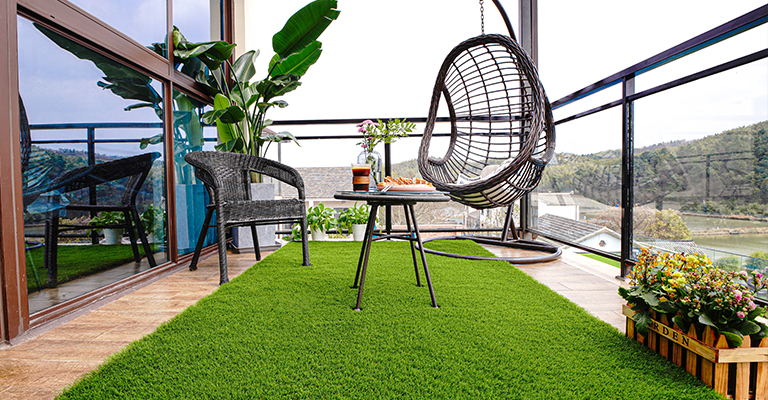Explore the Environmental Perks of Opting for Artificial Lawn Solutions
The adoption of synthetic lawn remedies provides an engaging opportunity to address pressing ecological challenges. By significantly minimizing water usage and minimizing the application of harmful chemicals, these options not just advertise lasting landscape design but likewise secure neighborhood environments.
Water Preservation Benefits
One of the most significant advantages of artificial lawn is its capacity to preserve water. In contrast, man-made lawn does not require watering, significantly decreasing the total need for water sources.
By eliminating the demand for regular watering, synthetic turf adds to lasting landscape practices and assists minimize the environmental influence of excessive water usage. The preservation of water prolongs to the decrease of overflow, which can lead to dirt erosion and waterway air pollution.
Furthermore, the setup of fabricated lawn permits homeowners and towns to assign water sources extra effectively, focusing on vital usages such as alcohol consumption water and agriculture. The change in the direction of synthetic grass not just advertises liable water use however additionally straightens with more comprehensive environmental goals targeted at maintaining natural deposits.
As areas progressively focus on sustainability, the water preservation advantages of artificial turf present a compelling situation for its adoption in domestic and business landscape design tasks.
Lowered Chemical Use
The transition to synthetic grass significantly reduces the dependence on chemical therapies generally made use of in all-natural grass upkeep. Typical grass administration commonly involves the application of herbicides, pesticides, and plant foods to promote growth and control bugs. These chemicals can pose threats to human wellness, regional wildlife, and the environment, adding to dirt and water contamination.
On the other hand, synthetic grass eliminates the demand for these damaging materials. When installed, it requires marginal maintenance, mostly containing routine cleaning and infrequent infill replenishment. This reduction in chemical use not just benefits the instant environment yet also adds to wider environmental stability. By lessening the launch of artificial compounds into the ecological community, synthetic grass advertises much healthier dirt and water supply.
In addition, the lack of chemical runoff related to man-made lawn installations helps protect neighborhood waterways from pollution, supporting marine life and maintaining biodiversity. Phoenix turf companies. As communities increasingly focus on lasting techniques, deciding for synthetic grass presents a feasible option that straightens with environmental conservation objectives. Through this shift, homeowner can enjoy rich green spaces without jeopardizing environmental health, paving the means for an extra lasting future
Reduced Carbon Impact

In addition, the setup of synthetic lawn can cause substantial water preservation. Natural lawns need substantial quantities of water for irrigation, which not just includes to the carbon footprint connected look at these guys with water extraction and therapy however likewise stress local water sources. In comparison, fabricated grass requires minimal upkeep, requiring no watering, thereby substantially decreasing water use and its associated energy prices.
Furthermore, the durability of synthetic lawn adds to its reduced carbon influence. With a lifespan of as much as 15 years or more, the demand for constant replacements is decreased, leading to less waste and lower power usage in production and taking care of conventional lawn alternatives. Overall, artificial turf presents a sustainable option for eco more tips here aware landscape design.
Environment Conservation
Environment conservation is a critical factor to consider in the debate over landscaping choices, specifically when contrasting fabricated grass to natural lawn. Natural lawn yards frequently need extensive maintenance, consisting of using plant foods, herbicides, and pesticides, which can detrimentally influence regional ecosystems. These chemicals can leach into the soil and rivers, damaging native flora and fauna and interfering with neighborhood environments.
On the other hand, synthetic grass presents a chance to reduce the eco-friendly impact of landscaping. By going with synthetic lawn, house owners can minimize the disruption of all-natural habitats related to standard lawn treatment practices. Fabricated grass eliminates the requirement for damaging chemicals, therefore safeguarding neighboring wildlife and preserving the integrity of bordering environments. The setup of fabricated lawn can lead to the conversion of former turf areas into more biodiverse landscapes, such as pollinator gardens or native plant areas, which can support regional wild animals.
Eventually, the shift to synthetic grass not only preserves water and lowers upkeep efforts but also cultivates an extra harmonious relationship in between human tasks and the natural surroundings, advertising habitat preservation while doing so.
Long-Term Sustainability
Lasting sustainability is a crucial consider examining the benefits of synthetic grass over typical lawn lawns. Among the most significant advantages of synthetic lawn is its Resources durability; it can last approximately 15-20 years with minimal upkeep, whereas all-natural grass needs frequent reseeding and substitute. This longevity lowers the need for consistent resources, such as water, plant foods, and pesticides, which are vital for maintaining a healthy and balanced grass yard.
Additionally, artificial lawn adds to a decrease in carbon discharges related to lawn care equipment. Conventional yards commonly call for gas-powered lawn mowers, trimmers, and blowers, all of which add to air pollution. Arizona turf. On the other hand, synthetic grass removes the requirement for such equipment, promoting a cleaner atmosphere
Moreover, the production of synthetic grass increasingly utilizes recycled materials, improving its sustainability account. As suppliers adopt environment-friendly techniques, the ecological impact of artificial turf continues to decrease.

Verdict
The fostering of synthetic grass remedies offers significant environmental advantages, including considerable water conservation, minimized dependence on harmful chemicals, and a lower carbon footprint. Furthermore, fabricated turf aids in protecting natural habitats by minimizing land disturbance and advertising long-lasting sustainability through making use of durable products. Collectively, these factors emphasize the possibility of man-made grass to contribute favorably to environmental wellness and use a practical alternative to typical landscape design techniques in a significantly resource-conscious globe.
In comparison, synthetic lawn does not require watering, significantly lowering the total need for water resources. By decreasing the launch of synthetic compounds into the ecosystem, synthetic turf promotes healthier soil and water systems.
Additionally, the installation of synthetic turf can result in significant water conservation. In comparison, artificial lawn requires marginal maintenance, calling for no watering, consequently significantly minimizing water use and its linked energy prices.
